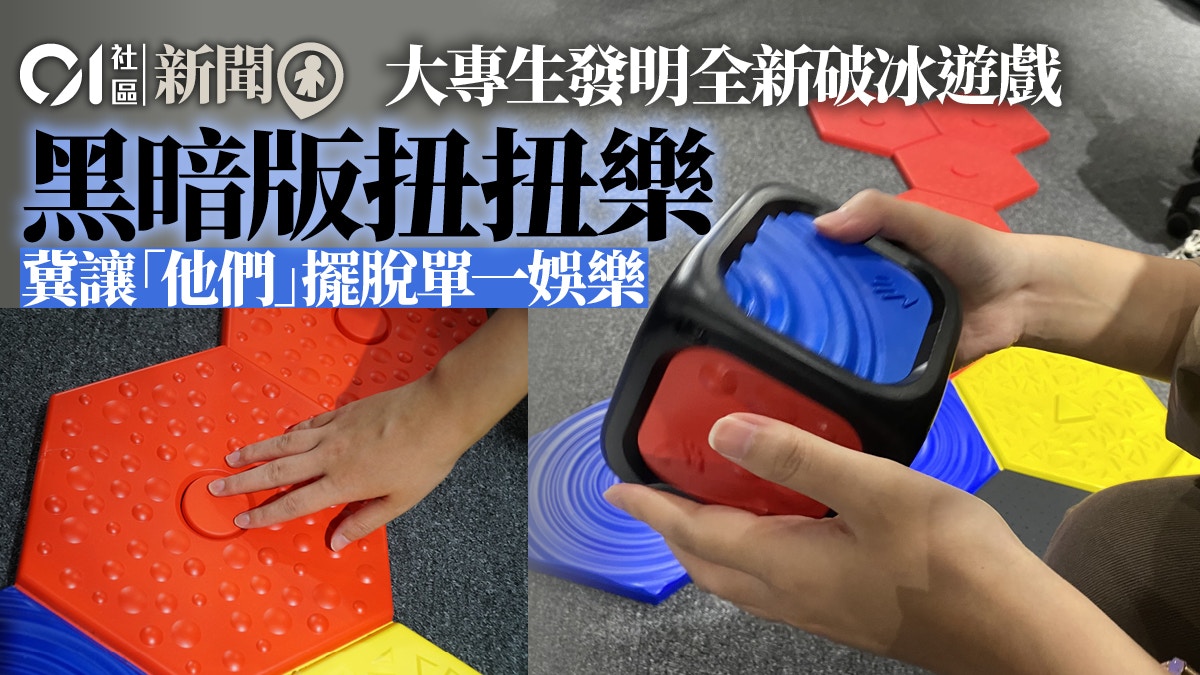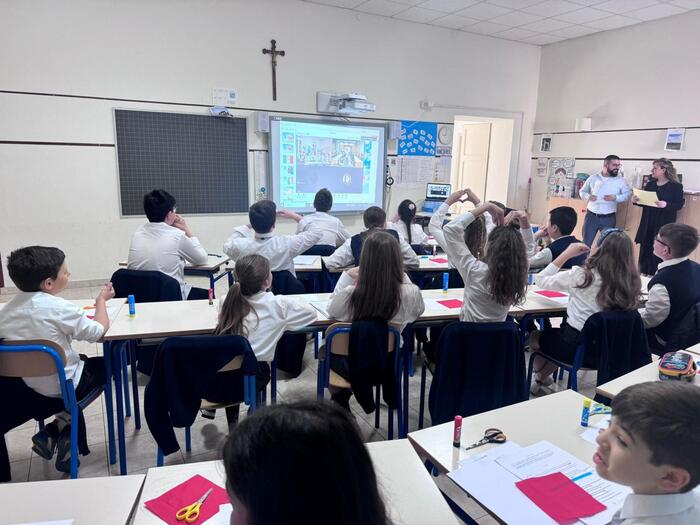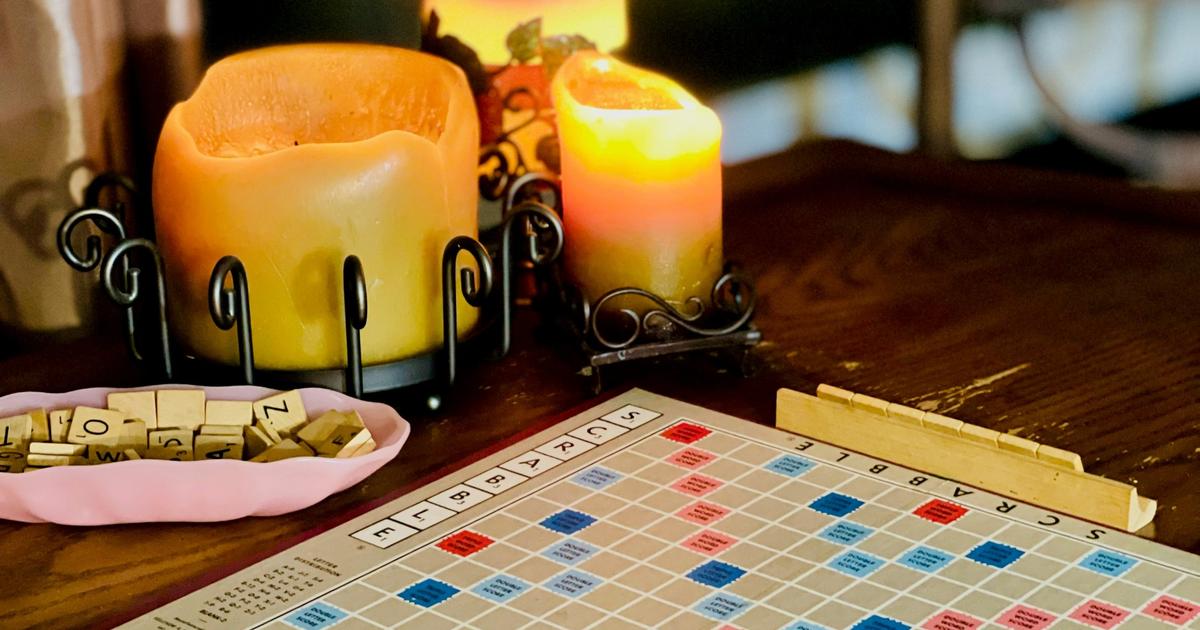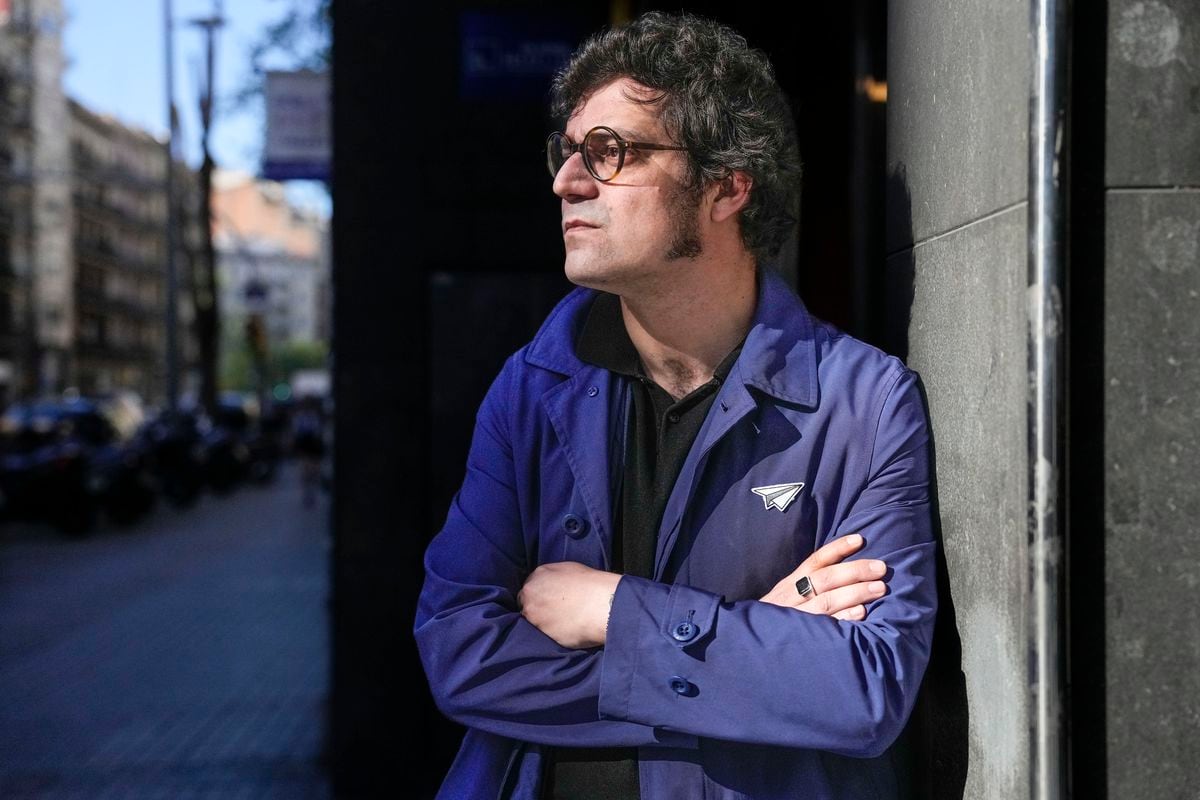There are currently about 170,000 visually impaired people in Hong Kong. Some design students have created a set of games that the visually impaired and the visually impaired can participate in, so that the visually impaired can experience the feelings of the visually impaired. Both parties have fun through the game and deepen mutual understanding. .
The designer hopes that the product will allow the visually impaired to bid farewell to the single static entertainment in the past and enhance their life interest.
Some students also designed tableware "on the floor" according to the actual needs of the visually impaired to solve the inconvenience of their daily lives.
Representatives of visually impaired organizations expressed that they hope that through this design project, students will be able to better understand the actual situation of the visually impaired, and in future design work, they will be able to better consider and take into account the needs of different people.
Last year, the gifted design studio of the Hong Kong Design Institute (HKDI) cooperated with the Hong Kong Society for the Blind to launch the "Design for Well-being: Light from the Dark" project, which aims to design products that facilitate life for the visually impaired and enhance Their life is interesting and quality.
Lily, a graduate of the HKDI Advanced Diploma in Product Design, is the designer of the "Tangle" game.
The game concept of "Tangle" is similar to twist music. Players can use hexagonal accessories to freely assemble game blocks and adjust the difficulty.
In the process of participating in the game, the visually impaired players must wear special glasses to simulate the feeling of the visually impaired, and then follow the sound and color instructions of the game dice to stretch the designated body parts to different game blocks.
The game concept of "Tangle" is similar to twist music. Players can use hexagonal accessories to freely assemble game blocks and adjust the difficulty.
(Photo by Zeng Fengting)
Wu Lili said that when she learned that she wanted to design products for the visually impaired, she preconceived that they needed products that would facilitate their lives.
But after getting along with them, I realized that this inherent idea was wrong.
She believes that if these prejudices are not broken, it will be difficult for people to know their real needs.
After several interviews with the visually impaired, Wu Lili discovered that what they need most is more entertainment.
In the past, the daily entertainment of the visually impaired was relatively simple, mostly static activities, and rarely participated in games with the visually impaired. Therefore, she hoped to design a game that would increase the opportunities for the visually impaired to communicate with the visually impaired. Everyone can play together. In fact, the most important thing about playing is to have fun. It’s not as good as everyone’s pleasure."
The prototype of "Tangle" was born in response to the desire for dynamic entertainment of the visually impaired.
(Respondents provide pictures)
Wu Lili initially put the main design of "Tangle" on the touch. She chose larger patterns and engraved them on the accessories. The original intention was to make it easier for the visually impaired to receive image information and game instructions, but she didn't know the vision at the time. People with disabilities often use their fingers to feel the details of objects. If the patterns are too large, they will be confused. "I tried it myself, but I didn’t think it was a big problem. When I tried it (for the visually impaired), I first found out that he was used to using it. It’s very different from what I expected."
The visually impaired mainly rely on touch and hearing, and some people also respond to light.
After understanding the habits of the visually impaired, Wu Lili not only refined the patterns engraved on the accessories, but also added sound and light-emitting elements of different colors to it, making it easier for the visually impaired to participate in the game.
She believes that although many difficulties have been encountered throughout the design process, they have become an inspiration and made her understand the need to understand the needs of the audience. She hopes that through "Tangle", more people can understand the real situation of the visually impaired and let them get rid of them. Single entertainment.
Wu Lili hopes that through "Tangle", more people can understand the real situation of the visually impaired and let them get rid of the single entertainment.
(Photo by Zeng Fengting)
Improve the product based on users’ opinions
Another product designed by HKDI Higher Diploma in Product Design graduate Liao Zhuoxian (Mac) is "Relish", a tableware specially made for the visually impaired.
The tableware is composed of contrasting colors and special materials, designed to help the visually impaired distinguish food, reduce the chance of food spillage, and make them more enjoy the dining process.
The appearance of "Relish" is related to the experience of Shirley Zeng Shuyi, director of rehabilitation services of the Guidance Association for the Blind, who went out to eat with a visually impaired friend. She described that a visually impaired friend would put a chopstick in a bowl when enjoying a "dish-headed meal". On the edge of the plate, she later learned that the position of the chopsticks made it easier for them to grasp the position of the food. This was to prevent the food from getting out of the bowl.
After listening to Zeng Shuyi's sharing, Liao Zhuoxian hopes to design a set of tableware for the visually impaired.
After personally communicating with the visually impaired, Liao Cheuk-yin learned that they had difficulty in identifying the location of the tableware and eating. He hoped to use black and white to help them distinguish between food and tableware. However, after a trial by the visually impaired, the contrast between black and white was not obvious enough , He finally decided to use softer blue and white instead.
Through communicating with the visually impaired, Liu Cheuk-yin realized that designing products should be based on the user's point of view, "I think it is OK, it does not mean a good design." The key to the success of the design is to make improvements based on the users' opinions.
(Photo by Zeng Fengting)
When designing bowls, Liao Zhuoxian paid particular attention to its functionality. At first, he designed all the sides of the bowl to be recessed.
Although the bowls do prevent food from spilling, they also become difficult to clean.
After trial by the visually impaired, he re-improved the curvature of the bowl and replaced the full-concave design with gradual steps to achieve both cleaning and spill prevention functions.
Through this exchange, Liao Cheuk-yin realized that designing products should be based on the user's point of view, "I think it is OK, it doesn't mean it is a good design." The key to the success of the design is to make improvements based on the user's trial opinions.
The instructor hopes that students will understand "people-oriented" when designing
Liang Boyuan (Beam), a senior lecturer in the Department of Architecture, Interior and Product Design at HKDI, is the instructor of the "Design for Well-being: Light from the Dark" project. He believes that the project will benefit students a lot.
When they design products for the visually impaired, they also understand that they must understand the needs of users when designing. The entire design process is also close to the workflow of the industry, so it is also a good opportunity for students to practice.
Liang Boyuan (Beam), a senior lecturer in the Department of Architecture, Interior and Product Design at HKDI, is the instructor of the "Design for Well-being: Light from the Dark" project. He believes that the project will benefit students a lot.
(Photo by Zeng Fengting)
"In ordinary people's perception, they always feel that they (the visually impaired) have a lot of daily life problems, but they have never understood that what they want is actually so simple."
In an essay with the visually impaired, they said: "Actually, I just want to play the game", to make students reflect on whether the "preconceived" design method is appropriate in the past, so that they understand the needs of users in the process. The importance of.
Edwin, a lecturer in the Department of Communication Design at HKDI, hopes that students understand that design is not only about appearance, but whether its function can change or improve the quality of life is equally important.
(Photo by Zeng Fengting)
Edwin, a lecturer in the Department of Communication Design at HKDI, is the organizer of the project. He described the design course as a topic-oriented learning method. The most important thing is to let students enter the community in person, truly contact the audience, and understand the needs of different groups.
This plan arranges students to have meetings and interviews with the blind counseling club, so that students can experience the concept of "people-oriented design". Huang Yizhi mentioned that students used to interact with design mostly based on visuals. It is for them how to solve the needs of users. It is a challenge.
He hopes that students understand that design is not only about appearance, but whether its function can change or improve the quality of life is equally important.
Shirley, Director of Rehabilitation Services of the Hong Kong Society for the Blind, believes that the exchange with HKDI students is a good experience, allowing students to understand the concept of barrier-free.
(Respondents provide pictures)
Shirley, Director of Rehabilitation Services of the Hong Kong Society for the Blind, believes that the exchange with HKDI students is a good experience, allowing students to understand the concept of barrier-free.
She described that many designs on the market now focus on aesthetics and the needs of the general public, but ignore the needs of some users.
She took "light touch" products as an example. Although they are superior in convenience, beauty and functionality, they are not very friendly to the elderly and the visually impaired.
She hopes that through communicating with users, designers can better understand the actual situation of the visually impaired, and be able to better put themselves into consideration and take into account the needs of different people in future design work.
Catering institutions advocate food wise and waste reduction to transform the surplus of food ingredients into free lunchboxes for grassroots schoolchildren. Elder technology is there in rural areas?
Secondary school students designed a "personal" product and won the first "Worry-Relief Garden" in Hong Kong. Started the carer: Healing from planting
01Community















